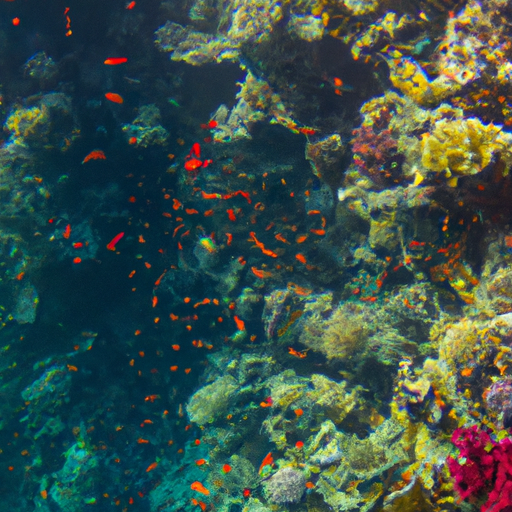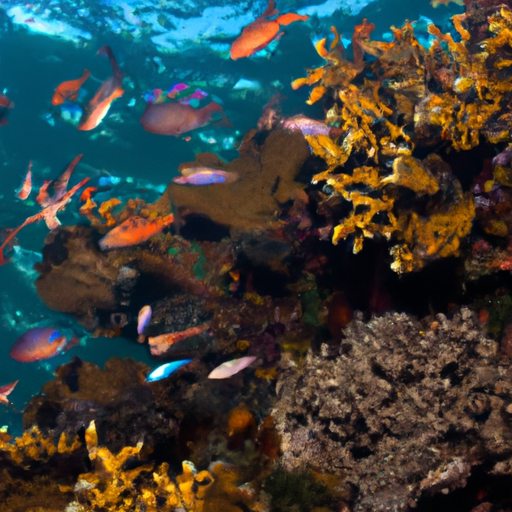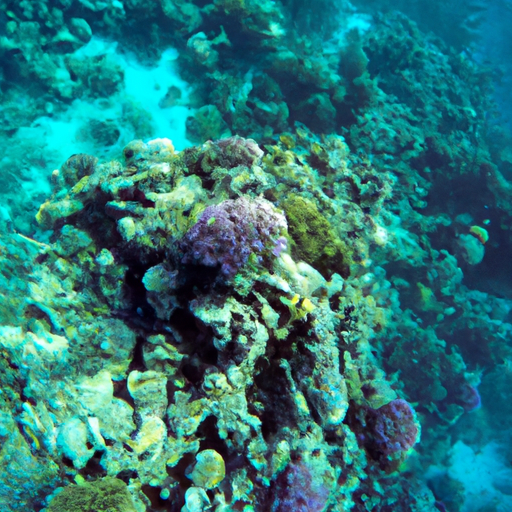
Exploring the Hidden Depths: An Introduction to Marine Ecosystems
Unveiling the Secrets of Marine Ecosystems: Understanding the Interconnectedness of Life Underwater
Marine ecosystems are vast, complex, and mysterious. Underneath the sparkling azure waters that cover over 70% of our planet lies a hidden realm of extraordinary beauty and diversity. These underwater landscapes are home to a staggering array of life forms, from microscopic organisms to gigantic whales, each a piece of the intricate puzzle that makes up our marine ecosystems.
Just as we are beginning to unravel the mysteries of outer space, scientists are also delving into the depths of our oceans, seeking to understand the interconnectedness of life underwater. Through extensive research and exploration, they are unveiling the secrets of marine ecosystems and shedding light on the complex relationships that organisms have with each other and their environment.
One crucial aspect of understanding marine ecosystems is recognizing the importance of biodiversity. Marine environments support an astonishing range of species, each adapted to a specific niche within the ecosystem. From the vibrant coral reefs teeming with fish to the deep-sea trenches inhabited by bizarre creatures, diversity is the key to the resilience and stability of these ecosystems.
At the heart of marine ecosystems lie intricate food webs, where every organism plays a role in the transfer of energy and nutrients. At the base of these webs are primary producers, such as algae and phytoplankton, which convert sunlight into food through photosynthesis. They form the foundation upon which the entire ecosystem depends, providing sustenance for countless other organisms.
In turn, these primary producers are consumed by herbivores, which are then preyed upon by carnivores. This intricate network of feeding relationships ensures the flow of energy and nutrients throughout the ecosystem, creating a delicate balance that must be maintained for the system to thrive.
However, marine ecosystems are not isolated entities but are instead interconnected with each other and with the broader Earth system. For example, the health of coral reef ecosystems can have ripple effects on nearby seagrass beds and mangrove forests, as well as on the communities that depend on these habitats for their livelihoods.
Understanding the interconnectedness of marine ecosystems is essential for effective conservation and management efforts. By studying the complex web of interactions between organisms and their environment, scientists can identify vulnerable species, pinpoint key habitats, and develop strategies to protect and restore these invaluable ecosystems.
Exploring the hidden depths of our oceans is an ongoing endeavor that continues to unveil astonishing discoveries and insights into the interconnectedness of life underwater. As we delve deeper into these uncharted waters, we gain a deeper appreciation for the importance of protecting and preserving our marine ecosystems for future generations to enjoy and rely upon.
The Intricate Web of Life: Understanding the Interconnectedness of Marine Organisms
The mesmerizing marine ecosystems that exist beneath the vast expanses of our oceans have always fascinated researchers and nature enthusiasts alike. These intricate webs of life are home to a diverse array of organisms, from microscopic plankton to colossal whales. But what truly captivates scientists is the interconnectedness of these marine organisms and the delicate balance that drives the functioning of these ecosystems.
Unveiling the secrets of marine ecosystems requires a deep understanding of the interconnectedness of life underwater. Every organism, no matter how small or seemingly insignificant, plays a vital role in maintaining the health and stability of the ecosystem as a whole. This complex network of interactions between species is what sustains life in the marine environment.
At the heart of these interconnected marine communities is the concept of trophic relationships. Trophic relationships describe the feeding interactions between different organisms within a food web. For example, phytoplankton, microscopic photosynthetic organisms, form the foundation of marine food webs. They convert sunlight into energy through photosynthesis and serve as the primary producers, providing nourishment for a wide range of organisms, including zooplankton, fish, and even marine mammals.
However, the interconnectedness of marine ecosystems goes beyond just the transfer of energy through trophic relationships. Many organisms also rely on symbiotic relationships to survive. Symbiosis refers to the close and often long-term interaction between two different species. One well-known example is the mutually beneficial relationship between clownfish and sea anemones. The clownfish finds protection within the stinging tentacles of the sea anemone, while the anemone benefits from the clownfish’s movements, which help in circulating oxygen and dispersing waste.
Understanding the interconnectedness of marine organisms also involves studying the movement and migration patterns of different species. Many marine organisms undertake long-distance migrations, often covering thousands of kilometers, in search of food, breeding grounds, or suitable habitats. These migrations not only contribute to the dispersal of populations but also facilitate the exchange of nutrients and genetic diversity between different parts of the ocean.
Advancements in technology and research methodologies have allowed scientists to delve deeper into the interconnectedness of marine organisms. Molecular techniques, such as DNA analysis, provide valuable insights into the genetic relationships between species and their interconnectedness at a microscopic level. Additionally, the use of tracking devices and tagging technologies has made it possible to study the movements and interactions of marine organisms in real-time, providing a more comprehensive understanding of their ecological roles.
Overall, unraveling the intricate web of life in marine ecosystems is a dynamic and ongoing endeavor. By studying the interconnectedness of marine organisms, scientists can gain valuable insights into the functioning and resilience of these complex systems. This knowledge is crucial for effective conservation and management of our oceans, ensuring the sustainability and well-being of the incredible biodiversity that thrives beneath the surface.
Unveiling the Mysteries: Key Factors Influencing the Health of Marine Ecosystems
Unveiling the Secrets of Marine Ecosystems: Understanding the Interconnectedness of Life Underwater
Marine ecosystems are a rich tapestry of interconnected organisms that thrive in the world’s oceans, and unlocking their mysteries is a key priority for scientists and researchers alike. By delving into the intricate web of relationships and dependencies within these ecosystems, we can gain invaluable insights into the health of our oceans and the overall well-being of our planet.
One of the key factors influencing the health of marine ecosystems is understanding the interconnectedness of life underwater. Every organism in the marine environment, from the tiniest plankton to the largest whales, plays a crucial role in maintaining the delicate balance of these ecosystems. Each species is intricately linked to others through various ecological interactions, such as predation, competition, and symbiosis.
At the foundation of marine ecosystems are phytoplankton, microscopic plants that harness the energy of the sun through photosynthesis. These primary producers form the base of the food chain, providing nourishment for a wide array of marine species. By understanding the distribution and abundance of phytoplankton, scientists can gain insights into the overall productivity and health of marine ecosystems.
Another key aspect of understanding the interconnectedness of marine ecosystems is recognizing the importance of biodiversity. The vast array of species in the ocean, including fish, corals, mollusks, and crustaceans, contributes to the resilience and stability of these ecosystems. Biodiversity not only enhances the overall productivity of marine ecosystems but also provides natural buffers against disturbances, such as climate change and pollution.
Furthermore, the physical characteristics of marine ecosystems, such as water temperature, salinity, and nutrient availability, play a vital role in shaping the distribution and abundance of marine species. Changes in these key environmental factors can have profound impacts on the structure and functioning of marine ecosystems, often leading to shifts in species composition and overall ecosystem dynamics.
Understanding the interconnectedness of life underwater also involves recognizing the impact of human activities on marine ecosystems. Overfishing, pollution, habitat destruction, and climate change are all major threats to the health and integrity of these ecosystems. By studying the intricate relationships between human activities and marine ecosystems, we can develop strategies for sustainable resource management and conservation.
In conclusion, unveiling the secrets of marine ecosystems is a complex and ongoing endeavor. By understanding the interconnectedness of life underwater, we can unravel the mysteries and gain a deeper appreciation for the intricate web of life that exists in our oceans. Through scientific research, conservation efforts, and sustainable practices, we can ensure the health and vitality of marine ecosystems for generations to come.
Impact of Human Activities: Threats to the Fragile Marine Environment
Unveiling the Secrets of Marine Ecosystems: Understanding the Interconnectedness of Life Underwater
The marine environment is not only rich in biodiversity but also plays a crucial role in maintaining the overall balance of the Earth’s ecosystems. It is home to an incredible variety of species, many of which are still being discovered and studied. From tiny plankton to majestic whales, each organism contributes to the intricate web of life that exists beneath the ocean’s surface.
Understanding the interconnectedness of life underwater is essential for conserving and protecting marine ecosystems. These ecosystems rely on complex relationships between different species, where any disturbance or imbalance can have far-reaching consequences.
For example, coral reefs, often referred to as the rainforests of the sea, support thousands of species and provide essential habitats and breeding grounds. However, they are highly vulnerable to the impacts of human activities such as pollution, overfishing, and climate change. When coral reefs are damaged or destroyed, the ripple effects are felt throughout the entire ecosystem. Species that depend on the reef for food or shelter become displaced, impacting predator-prey dynamics and altering the overall biodiversity of the area.
In addition to coral reefs, other marine habitats, such as seagrass beds, mangrove forests, and kelp forests, also play a critical role in supporting marine life. These habitats serve as nurseries for juvenile fish, provide protection against erosion, and contribute to carbon sequestration. However, they are threatened by coastal development, habitat destruction, and pollution.
Furthermore, the interconnectedness of marine life extends beyond individual species or habitats. Ocean currents, for example, transport nutrients, larvae, and even pollutants across vast distances, connecting different ecosystems and influencing their dynamics. The decline of one species can have cascading effects on the entire food chain, leading to imbalances in population sizes and distribution.
Studying and understanding the intricate connections and ecological processes within marine ecosystems is essential for effective conservation strategies. It allows us to identify vulnerable areas, predict the impacts of human activities, and develop targeted measures to mitigate these threats. It also highlights the importance of sustainable practices, such as responsible fishing, reducing pollution, and mitigating climate change.
By unraveling the secrets of marine ecosystems, we can ensure the long-term survival and health of these fragile environments. Only through a comprehensive understanding of the interconnectedness of life underwater can we hope to protect and preserve the incredible biodiversity and ecological functions that our oceans provide.



